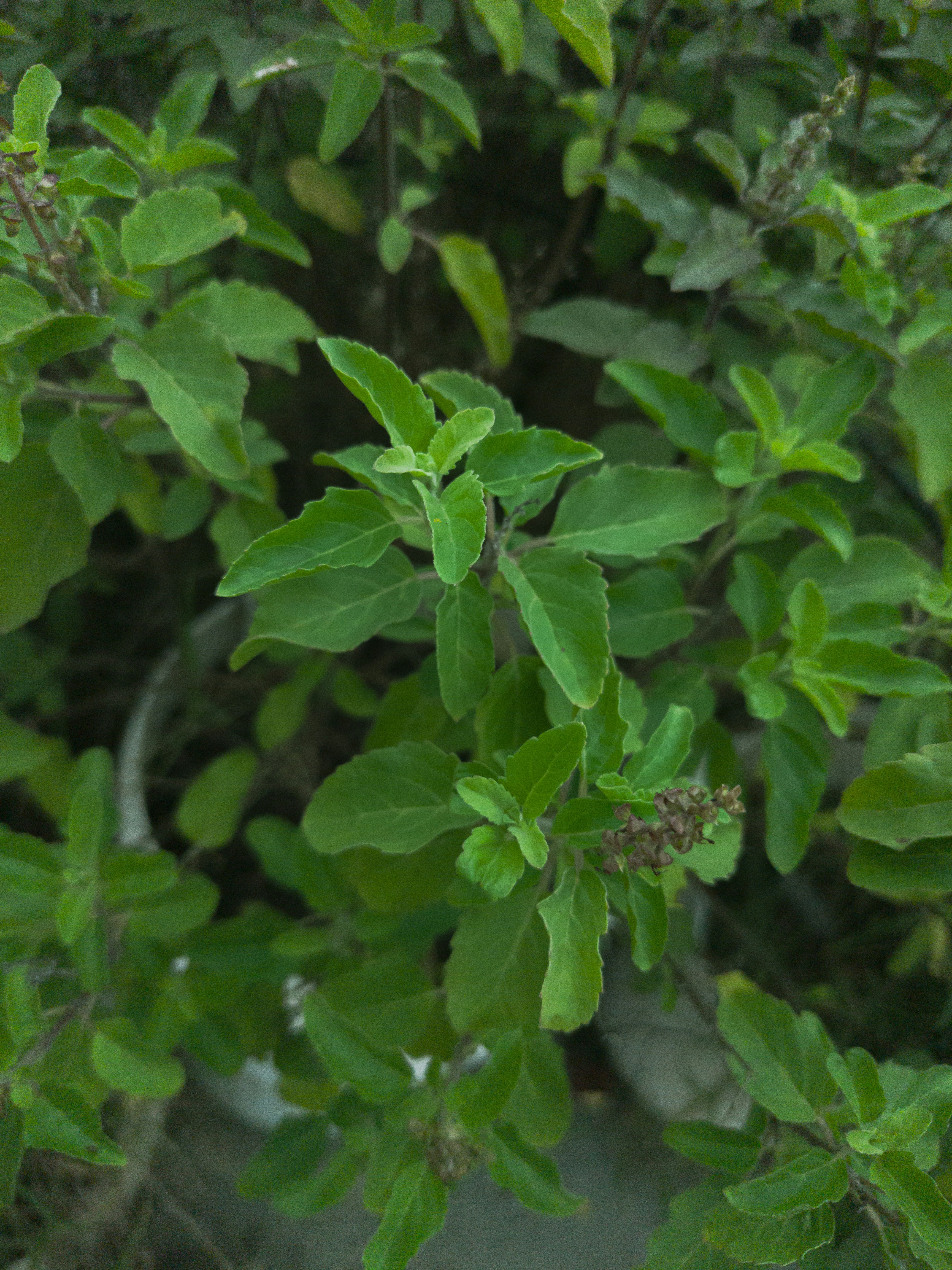Tulsi
Description
Tulsi, also known as Holy Basil (Ocimum sanctum), is a sacred and medicinal plant native to India, revered for its spiritual and healing properties. Often referred to as the "Queen of Herbs," tulsi is a cornerstone of Ayurveda, known for its ability to boost immunity, reduce stress, and promote overall well-being.
Preparing to Plant Tulsi
- Select Variety: Choose from Rama, Krishna, or Vana Tulsi.
- Location: Ensure 6-8 hours of sunlight and warm temperatures (70°F-95°F).
- Soil: Use well-draining, compost-enriched soil (pH 6.0-7.5).
- Pot (Optional): A 6-8 inch pot with drainage is ideal for container planting.
- Planting: Soak seeds or plant cuttings in moist soil.
- Watering: Keep soil moist; water less in winter.
- Fertilizing: Add compost every 4-6 weeks.
- Transplanting: Move 3-4 inch seedlings to larger pots or outdoors.
Types of Tulsi
There are three main types of Tulsi: Rama (Ocimum sanctum), Krishna (Ocimum tenuiflorum), and Vana (Ocimum gratissimum), each with unique medicinal properties.
Scientific and Biological Information
Scientific Name: Ocimum sanctum
Family: Lamiaceae (Mint family)
Genus: Ocimum
Common Names: Tulsi, Holy Basil, Sacred Basil
Native Range: India, Southeast Asia
Medicinal Properties: Tulsi is rich in antioxidants and has anti-inflammatory, antibacterial, and antiviral properties. It is used in Ayurvedic medicine to treat stress, respiratory issues, and digestive disorders.
Botanical Characteristics: Tulsi is a perennial shrub that grows 30–60 cm tall with hairy stems, fragrant leaves, and small purple or white flowers. The plant thrives in warm climates with plenty of sunlight.
